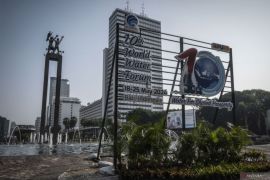In short, the AEC will transform ASEAN into a region with free movement of goods, services, investment, skilled labour, and freer flow of capital.Jakarta (ANTARA News) - The lack of socialization about the benefit of ASEAN Economic Community (AEC) to Indonesian businessmen hampers them to maximally benefit from the regional integration effective starting 2015, an Indonesian Chamber of Commerce and Industry (Kadin) official said.
"The businessmen need to know more about the AEC particularly its potentials and challenges for future trade relations in this region. The government particularly officials from the Trade Ministry and Industry Ministry must hold more discussions with businessmen about this issue," Kadin Vice Chief Noke Kiroyan said here on Tuesday.
Noke argued that Indonesia is relatively ready for the implementation of the AEC in 2015. Among the sectors that are ready are banking and industry, he said.
Earlier, Industry Minister MS Hidayat said the government is prioritizing nine industrial sectors to be developed in the run up to the formation of AEC by 2015.
"The AEC 2015 will be a pivotal moment for Indonesia to face opportunity as well as challenge. In the face of the AEC 2015, the government is prioritizing nine industrial sectors for the ASEAN market," the minister said.
To be the goal of regional economic integration by 2015, the AEC envisages the key characteristics of a single market and production base, a highly competitive economic region, a region of equitable economic development, and a region fully integrated into the global economy.
The AEC areas of cooperation include human resources development and capacity building; recognition of professional qualifications; closer consultation on macroeconomic and financial policies; trade financing measures; enhanced infrastructure and communications connectivity; development of electronic transactions through e-ASEAN; integrating industries across the region to promote regional sourcing; and enhancing private sector involvement for the building of the AEC.
In short, the AEC will transform ASEAN into a region with free movement of goods, services, investment, skilled labour, and freer flow of capital.
According to Hidayat, the nine industrial sectors to be developed are agro-based industry such as crude palm oil (CPO), cocoa and rubber; fish processing industry, textiles and textile products, footwear, leather and leather products, furniture industry, drink and beverage industry, fertilizer and petrochemical industry, machinery, and basic steel industry.
"Those industrial sectors are high on the list of priorities to be developed because they have better competitiveness than those from other countries in the region," he said.(*)
Editor: Heru Purwanto
Copyright © ANTARA 2013












